Cooking at home has become more popular than ever, with people paying closer attention to what they put on their plates. While making meals from scratch is a great step toward healthier living, many home cooks unknowingly include ingredients that may be doing more harm than good. From highly processed oils to artificial additives, some pantry staples have been linked to chronic health concerns or simply degrade the quality of your meals.
Nutritionists, chefs, and food scientists agree that certain ingredients are best left out of your recipes—not just because of their health risks, but also due to their poor culinary performance. Whether it’s artificial sweeteners that confuse your metabolism or cooking sprays filled with propellants, these ingredients can undermine your health goals and cooking efforts alike. Recognizing and replacing them with better alternatives can dramatically improve your food’s flavor, nutrition, and long-term benefits.
This article highlights 13 common cooking ingredients that experts suggest avoiding. For each, we’ll explain why it’s problematic, where it typically shows up, and what healthier substitutions you can use instead. Whether you’re a novice in the kitchen or a seasoned home chef, understanding what not to use is just as important as knowing what to include.
1. Vegetable Shortening
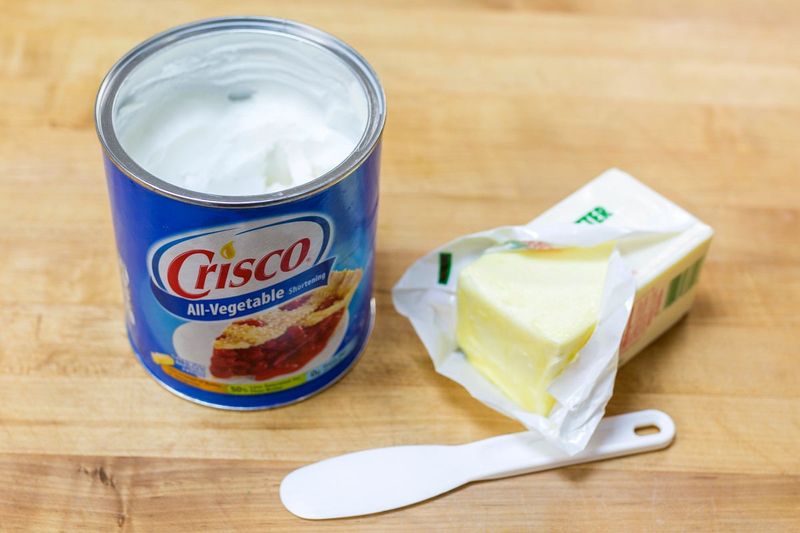
Bakers love vegetable shortening for creating flaky pie crusts and tender cookies, but this ingredient packs a dangerous punch. Most vegetable shortenings contain high levels of trans fats, which are among the worst types of fats for your cardiovascular system. Trans fats raise bad cholesterol while lowering good cholesterol, creating a double threat to heart health. They also trigger inflammation throughout your body, contributing to various chronic diseases. Instead of reaching for vegetable shortening, try using coconut oil, butter, or even mashed bananas in your baking. These alternatives provide better flavor and nutrition without the harmful trans fat content that makes this ingredient so problematic.
2. Margarine
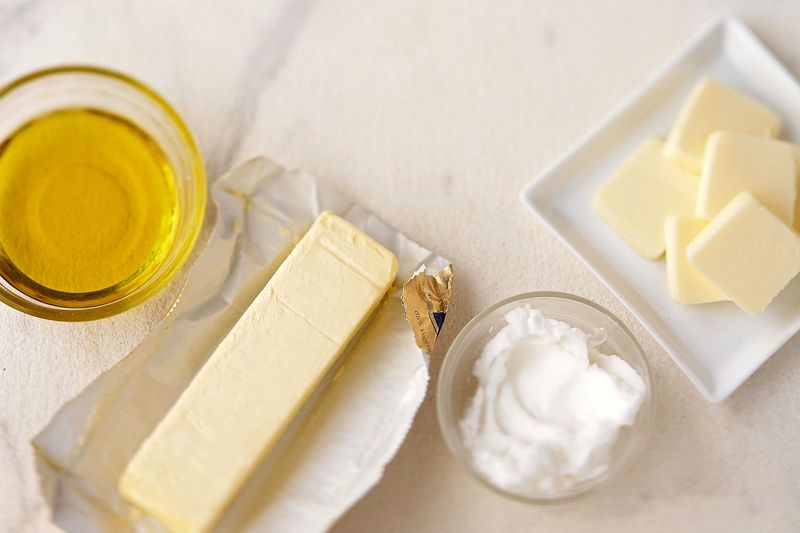
Originally marketed as a healthier butter alternative, margarine has fallen from grace as we’ve learned more about its composition. Many margarine brands still contain trans fats and a cocktail of artificial additives that your body doesn’t recognize as real food. The hydrogenation process used to make margarine solid creates these harmful trans fats. Even margarines labeled as trans fat-free may contain small amounts that add up over time with regular consumption. Real butter, despite its saturated fat content, is actually a more natural choice for your body to process. Plant-based alternatives made with real oils like olive or avocado provide heart-healthy fats without the artificial processing that makes margarine problematic.
3. Artificial Sweeteners
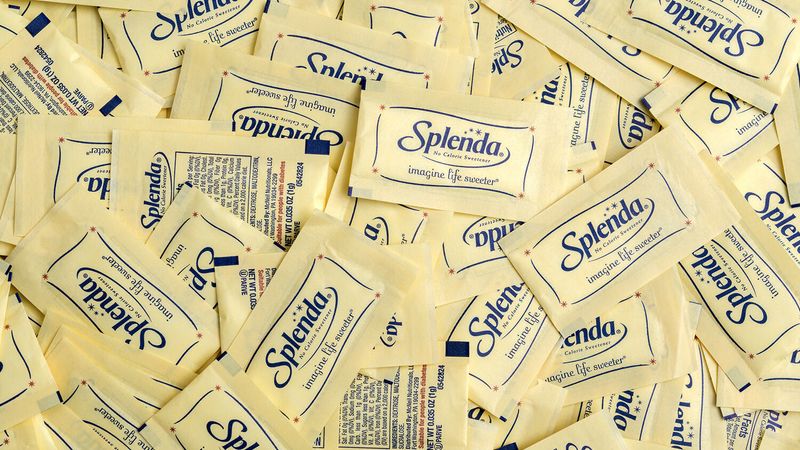
Those little pink, blue, and yellow packets seem like magic solutions for cutting calories, but artificial sweeteners like aspartame and saccharin come with their own set of problems. Recent research suggests these chemical compounds may disrupt the beneficial bacteria in your gut microbiome. Paradoxically, artificial sweeteners might actually increase sugar cravings for some people. Your brain expects calories when it tastes sweetness, and when those calories don’t arrive, it may trigger stronger cravings later. Natural alternatives like stevia, monk fruit, or small amounts of honey provide sweetness without the potential gut disruption. These options work with your body’s natural systems rather than confusing them with artificial chemical signals.
4. Monosodium Glutamate (MSG)
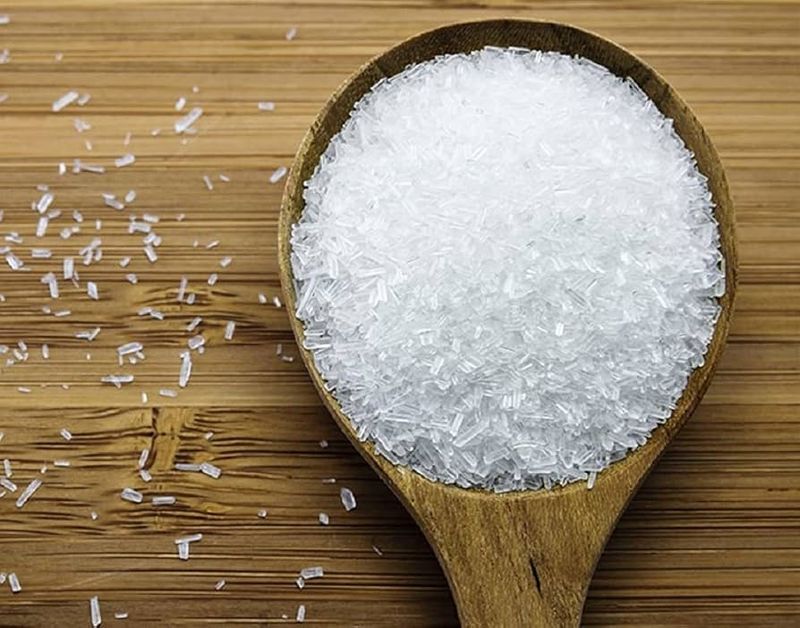
MSG has been the subject of heated debate for decades, with food safety agencies generally declaring it safe while some individuals report uncomfortable reactions. Common symptoms include headaches, nausea, flushing, and sweating after consuming MSG-containing foods. While not everyone experiences MSG sensitivity, those who do find it significantly impacts their dining experience. The compound is often hidden in processed foods under names like “natural flavoring” or “yeast extract.” If you suspect MSG sensitivity, try eliminating it from your cooking and see how you feel. Natural flavor enhancers like garlic, herbs, spices, and citrus can provide the umami taste that MSG delivers without any potential side effects for sensitive individuals.
5. Refined Sugar
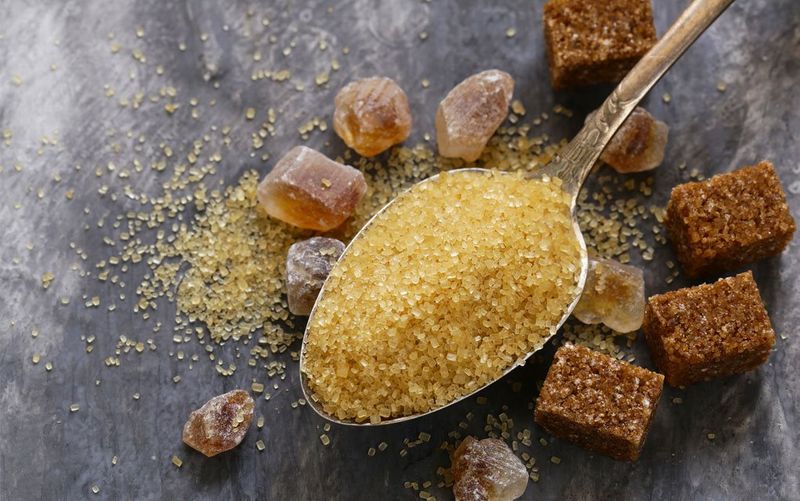
White sugar might look innocent, but this highly processed sweetener has been stripped of all its natural nutrients during refining. The bleaching and chemical processing remove any beneficial minerals or vitamins that were originally present in sugar cane or sugar beets. Regular consumption of refined sugar contributes to chronic inflammation in your body, which is linked to numerous health problems including obesity, diabetes, and heart disease. It also causes rapid blood sugar spikes followed by crashes that leave you craving more. Natural sweeteners like raw honey, pure maple syrup, or dates provide sweetness along with minerals, antioxidants, and fiber. These alternatives satisfy your sweet tooth while nourishing your body rather than depleting it of nutrients.
6. High-Fructose Corn Syrup

This liquid sweetener lurks in countless processed foods, from ketchup to soft drinks, and poses serious health risks. High-fructose corn syrup is metabolized differently than regular sugar, placing extra strain on your liver and contributing to fatty liver disease. The fructose component bypasses normal appetite regulation signals, making it easier to overconsume calories without feeling full. This metabolic disruption is strongly linked to insulin resistance, obesity, and type 2 diabetes. Reading ingredient labels becomes crucial when avoiding this sweetener, as it appears in surprising places like bread, salad dressings, and yogurt. Choose products sweetened with cane sugar, honey, or fruit juice concentrates, or better yet, make your own sauces and dressings at home.
7. Highly Processed Canola Oil

Canola oil itself isn’t inherently evil, but the industrial refining process transforms this potentially healthy oil into something less beneficial. High-heat processing and chemical extraction methods create oxidation products that can be harmful to your health. The refining process strips away natural antioxidants and nutrients, leaving behind a neutral-tasting but nutritionally empty oil. Some studies suggest that heavily processed oils may contribute to inflammation and cellular damage over time. Cold-pressed or expeller-pressed canola oil retains more of its natural properties, but even better options include olive oil, avocado oil, or coconut oil for cooking. These alternatives provide beneficial compounds along with the fats your body needs for optimal function.
8. Artificial Soy Sauce

Traditional soy sauce undergoes a natural fermentation process that can take months or even years, creating complex flavors and beneficial compounds. However, many commercial soy sauces take shortcuts using chemicals and artificial coloring agents to mimic authentic flavor. These quick-production methods often involve hydrochloric acid to break down soy proteins rapidly, followed by artificial colors and flavors to create the expected appearance and taste. The result lacks the depth and nutritional benefits of traditionally fermented soy sauce. Look for labels that specifically mention “naturally brewed” or “fermented” soy sauce. These authentic versions provide probiotics and complex flavors that enhance your cooking while supporting digestive health through their beneficial bacterial cultures.
9. Overused Table Salt
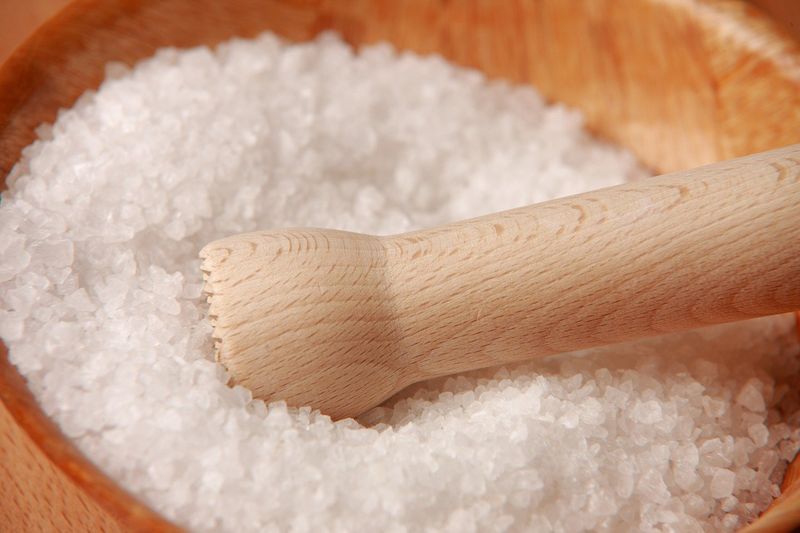
Regular table salt undergoes heavy processing that strips away the natural trace minerals found in unrefined salt. The anti-caking agents and iodine added during processing create a product that’s far removed from natural salt sources. More concerning is how easily we overuse this refined salt, especially when cooking with processed foods that already contain high sodium levels. Excessive sodium intake contributes to high blood pressure, water retention, and strain on your cardiovascular system. Sea salt, Himalayan pink salt, or Celtic salt retain beneficial minerals like magnesium, potassium, and calcium. These natural alternatives provide the sodium your body needs along with trace elements that support various bodily functions, making them more nutritionally complete choices.
10. Artificial Food Coloring

Those bright, vibrant colors in processed foods come from synthetic dyes like Red 40 and Yellow 5, which have raised concerns among health experts. Studies have linked these artificial colors to hyperactivity and behavioral issues in some children. Many artificial food dyes are derived from petroleum products and may contain carcinogenic compounds as byproducts of their manufacturing process. European countries have banned or require warning labels on foods containing these dyes. Natural food coloring alternatives include beet juice for red, turmeric for yellow, and spirulina for blue-green hues. These plant-based options provide color along with nutrients and antioxidants, making your food both beautiful and beneficial rather than potentially harmful.
11. Butane-Based Cooking Sprays
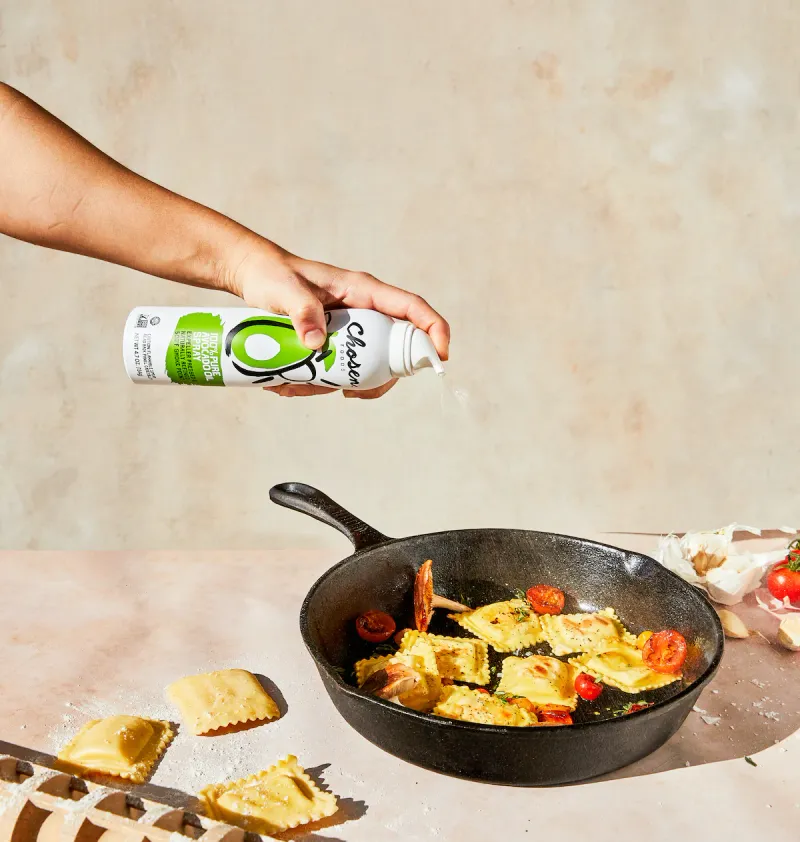
That convenient cooking spray might contain more than just oil – many aerosol versions use propellants like butane or propane to create the spray mechanism. While these chemicals aren’t intended for consumption, trace amounts can end up in your food. The convenience of aerosol sprays comes at the cost of exposing your food to potentially harmful propellants and artificial additives. The high-pressure environment can also affect the quality and stability of the oil inside. An oil mister filled with high-quality olive oil or avocado oil provides the same convenience without chemical propellants. These refillable spray bottles give you control over both the oil quality and the amount used, creating a healthier and more economical cooking solution.
12. Imitation Vanilla Extract
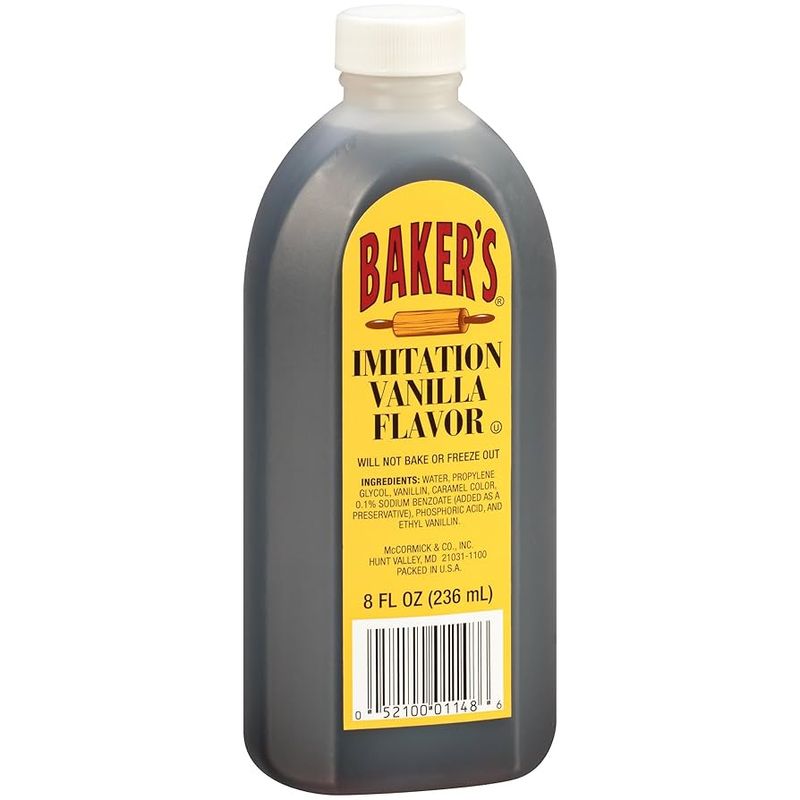
Artificial vanilla flavoring, also known as vanillin, often comes from surprising sources including wood pulp byproducts or even petroleum-based chemicals. While it mimics the primary flavor compound in real vanilla, it lacks the complex flavor profile of authentic vanilla extract. The chemical processing required to create artificial vanilla involves solvents and synthetic compounds that your body must work to process and eliminate. This synthetic version also misses the subtle flavor notes that make real vanilla so prized in baking. Pure vanilla extract, made from real vanilla beans soaked in alcohol, provides a richer, more complex flavor that enhances your baking significantly. Though more expensive, a little goes a long way, and the superior taste and natural composition make it worth the investment.
13. Bleached Flour

That pristine white flour in your pantry achieved its color through chemical bleaching agents like benzoyl peroxide or chlorine gas. This process not only removes the natural color but also strips away fiber, vitamins, and minerals that were present in the original grain. The bleaching chemicals can leave residues in the flour, and the high-heat processing destroys beneficial compounds. What remains is essentially empty calories that cause blood sugar spikes without providing meaningful nutrition. Unbleached flour retains more of its natural properties and nutrients, while whole grain flours provide fiber, protein, and essential minerals. These alternatives create more nutritious baked goods that satisfy hunger longer and support stable blood sugar levels throughout the day.
Leave a comment